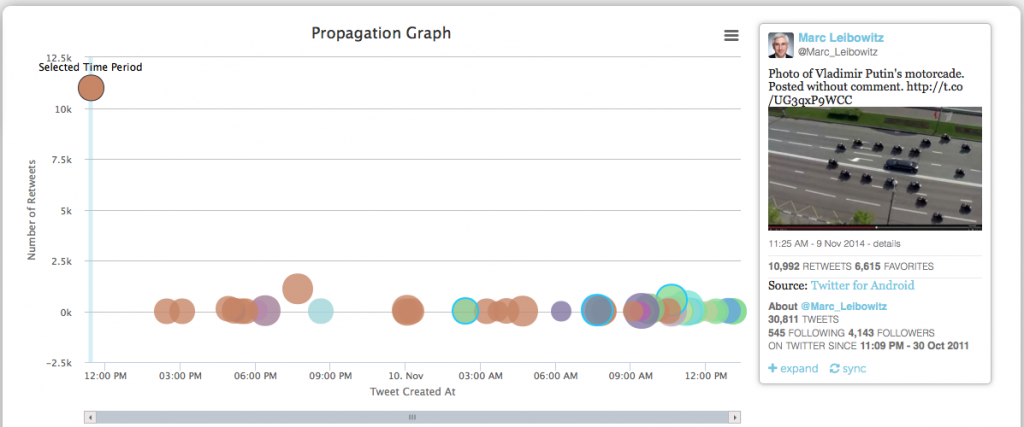Twittertrails is studying the propagation of rumors on Twitter. It will give you evidence about how the Twitter audience reacts to a rumor and whether the audience believes the rumor is a hoax or not. Its method of measuring the skepticism of the audience is a little more sophisticated than counting retweets, however. In fact, the rumor may get a huge head start, almost 11,000 retweets, but if they all came from the same source, they will not count as much on the skepticism level.
Let us demonstrate the skepticism level with an example. The twittertrails.com user asks the system to retrieve all tweets containing the terms “putin motorcade”, and the rest are computed automatically in a few minutes.
The “Putin Motorcade Shape” Story
A few days ago, a funny rumor appeared, that Putin’s motorcade was shaped as, well, you’ll see in the accompanying picture:
The originating tweet who broke the story received almost 11,000 retweets! One of the reasons for that amazing count that any marketer would love, was that the account owner is a member of several groups with different political, ethnic and financial identities. Looking into the timeline graph, however, one can see that he was not the first to write about it. The first relevant tweet came several days before his post, by an Ukranian Euromaidan account.
Continue reading According to the crowd, Putin’s motorcade shape was a hoax

